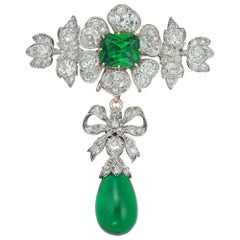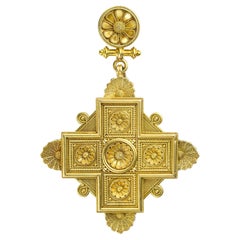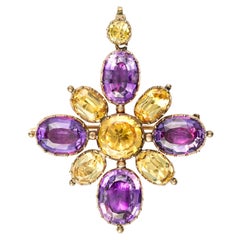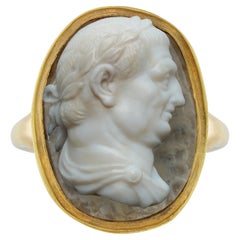Want more images or videos?
Request additional images or videos from the seller
1 of 6
18th Century Order of Aviz Portuguese Paste Cross
$17,339.79List Price
About the Item
- Metal:Silver
- Style:Baroque
- Place of Origin:Portugal
- Period:18th Century
- Date of Manufacture:circa 1760
- Condition:Wear consistent with age and use.
- Seller Location:London, GB
- Reference Number:Seller: 29742M1stDibs: LU57611153352
About the Seller
4.9
Recognized Seller
These prestigious sellers are industry leaders and represent the highest echelon for item quality and design.
Established in 1880
1stDibs seller since 2014
102 sales on 1stDibs
Typical response time: 23 hours
Authenticity Guarantee
In the unlikely event there’s an issue with an item’s authenticity, contact us within 1 year for a full refund. DetailsMoney-Back Guarantee
If your item is not as described, is damaged in transit, or does not arrive, contact us within 7 days for a full refund. Details24-Hour Cancellation
You have a 24-hour grace period in which to reconsider your purchase, with no questions asked.Vetted Professional Sellers
Our world-class sellers must adhere to strict standards for service and quality, maintaining the integrity of our listings.Price-Match Guarantee
If you find that a seller listed the same item for a lower price elsewhere, we’ll match it.Trusted Global Delivery
Our best-in-class carrier network provides specialized shipping options worldwide, including custom delivery.You May Also Like
Antique 18th Century Pair Of Paste and Metal Brooches
Located in Munich, Bavaria
These elegant brooches were handcrafted in the 2nd half of the 18th century.
The brooch to the top left is made out of two pointed ovals of beautifully cut slightly trapeze shaped wh...
Category
Antique 1770s European George II Brooches
Materials
Silver
$6,858
Free Shipping
H 1.11 in W 1.74 in D 0.32 in
Antique 18th Century Diamond Sequile Pendant/Brooch Yellow Gold Portuguese 1700s
Located in Lisbon, PT
Antique diamond sequile pendant/brooch in 19.2kt yellow gold, Portugal, early 18th century. This Portuguese jewel from the Georgian period of an intr...
Category
Antique Early 18th Century Portuguese Rococo Brooches
Materials
Diamond, Gold, 18k Gold, Yellow Gold
$6,393
W 1.58 in L 2.76 in
Antique Portuguese “Bow” Brooch, Silver and Topaz, 18th Century
Located in Lisboa, PT
“Laça” brooch in 833‰ silver with topazes, Portuguese, second half of the 18th century. Floral decoration with stylised bow, with 3 removable “girandola” pendants in the shape of sty...
Category
Antique 18th Century Portuguese Art Nouveau Brooches
Materials
Topaz, Silver
$9,341
Free Shipping
W 2.76 in L 2.17 in
Antique 18th/19th Century Rose-Cut Diamonds Devant de Corsage Silver Portuguese
Located in Lisbon, PT
Antique Late 18th / 19th Century rose-cut diamond devant de corsage or stomacher in closed-back silver, Portugal. This Portuguese jewel is composed b...
Category
Antique Late 18th Century Portuguese Georgian Brooches
Materials
Diamond, Silver
$29,561
W 2.92 in L 4.34 in
Georgian Portrait Brooch Pendant Early 19th Century Paste Silver En Grisaille
Located in New York, NY
Indulge in this stunning Georgian Antique Brooch or Pendant with a magnificent hand painted portrait miniature of a woman painted "en grisaille" and set in magnificent frame with ear...
Category
Antique 19th Century French Napoleon III Pendant Necklaces
Materials
Silver
$2,750
Free Shipping
H 2.5 in W 2 in
Antique 17th/18th Century Sequilé Diamond Demi-Parure Yellow Gold Portuguese
Located in Lisbon, PT
Museum-quality antique late 17th/early 18th century diamond and yellow gold Baroque “sequilé” earrings and pendant/brooch demi-parure, Portuguese, with hallmarks from the period and ...
Category
Antique Early 18th Century Portuguese Georgian Dangle Earrings
Materials
Diamond, Gold, Yellow Gold
$19,215 / set
W 1.34 in L 2.68 in
Massive 19th Century Paste Sword Jabot Brooch
Located in New York, NY
Massive and exceptional 19th Century Paste Sword Jabot Brooch from the l9th Century. Designed likely for a heavy cloak or cape set in sterling with pastes ...
Category
Antique 1870s French High Victorian Brooches
Materials
Vermeil, Sterling Silver
Early 19th Century 18K Rock Crystal Lover's Eye with Silver & Paste Teardrop
Located in New York, NY
While the craze for Lover’s Eye miniatures flourished from the 1790s through the 1820s—spurred on by the Prince of Wales’ famously illicit romance with Maria Fitzherbert—this brooc...
Category
Antique Early 19th Century English Early Victorian Brooches
Materials
Rock Crystal, 18k Gold, Yellow Gold, Silver
18th Century Micromosaic Plaque of a Bluebird, attributed to G. Raffaelli.
Located in Aspen, CO
18th Century micromosaic plaque of a bluebird, Rome, c. 1785, attributed to Giacomo Raffaelli (1753-1836). A micromosaic plaque of a blue bird perched on a flowering tree branch, 2.25 inches in diameter. The ground line is parallel and low. The foreground green grass with a brown rock in the front. The background is a creme color with parallel lines of square tesserae. The bird has both square and oblong tesserae as does the foreground. The border of a decorative pattern with three colors with a red circle or dot in a white square on blue. Like most plaque done at this time, it is backed with copper. There is a black substance or adhesive which, centuries ago, could have been applied to adhere this plaque on a box or in a frame. We have chosen to keep this as it came to us, and in an effort to be careful, we have made no effort to remove it.
We have dated this piece as being the last quarter of the 18th century, and attributed to the master mosaicist Giacomo Raffaelli. This micromosaic has all of the established 18th century characteristics of micromosaics executed by Giacomo Raffaelli: 1. Each tesserae possesses one color. 2. The tesserae are either oblong or square. 3. The background is parallel horizontal rows of square tesserae, and 4. The addition of an identical border or millefiori around the edge. For more detailed information, see page 32 of "The Gilbert Collection Micromosaics by Jeanette H. Gabriel. Philip Wilson Publishers.
Raffaelli is known for his very realistic depictions of birds. His naturalism and use of colors is among the finest of mosaicists at this time. Raffaelli became one of the most feted mosaicists in all of Rome. Indeed when Napoleon I wanted to sponsor a mosaic version of the Last Supper in roughly 1810 he chose Raffaelli. This selection itself added to the already high reputation of Raffaelli.
This micromosaic is in very good condition and probably executed by one of the greatest of mosaicists ever and, who is thought by art historians to be the first creator of modern mosaics in the late 18th century.
We have one of the largest collections of micromosaics offered for sale. If our reader is searching for a particular motif, we would be happy to list it here for your consideration. From very large wall hangings...
Category
Antique 1780s Italian Georgian Brooches
$10,400 Sale Price
20% Off
Free Shipping
18th Century Micromosaic of a Goldfinch, c. 1790, attributed to G. Raffaelli
Located in Aspen, CO
18th Century micromosaic plaque of a Goldfinch, Rome, c. 1785, attributed to Giacomo Raffaelli (1753-1836). A micromosaic plaque of a goldfinch, looking left, perched on a red flowering tree branch, two inches in diameter. The ground line is parallel and low. The foreground is of different colors of grass and fallen berries and leaves. The background is a light blue with parallel lines of square tesserae. The goldfinch has both square and oblong tesserae as does the foreground. The border of a decorative pattern in white in black circles and further with a rim of yellow oblong tesserae create a colorful frame for this well executed micromosaic which is backed with copper.
There is a pinstem and "c" clasp (this type of clasp is seen both in the 18th and 19th centuries), both are not gold. This assembly could have been put on at the time of purchase or slightly later so the plaque could be worn as a brooch.
We have dated this piece as being at the end of the 18th century and attributed to Giacomo Raffaelli. This micromosaic has all of the established 18th century characteristics of micromosaics executed by Giacomo Raffaelli: 1. Each tesserae possesses one color. 2. The tesserae are either oblong or square. 3. The background is parallel horizontal rows of square tesserae, and 4. The addition of an identical border or millefiori around the edge. See page 32 of "The Gilbert Collection Micromosaics by Jeanette H. Gabriel. Philip Wilson Publishers.
Giacomo Raffaelli (1753-1836) is one the most important artists of micromosaics, his signed pieces are almost nowhere to be found - unless in museums and important collections of the world. We know of nine that exist in the world. Two in the Hermitage, two in the renowned Gilbert Collection, one in the British Museum, three held by different companies in the trade, and one held by Pierre/Famille ( for sale on this platform). Raffaelli was considered the finest mosaicist in Rome. Indeed, when Napoleon I wanted to sponsor a mosaic version of The Last Supper, in roughly 1810, he chose Raffaelli, this too added much to his fame.
A very similar plaque, also attributed to Raffaelli, can be seen in the above referenced book on page 56. This plaque is part of The Gilbert Collection. The permanent collection is on view at the Victoria & Albert Museum in London.
Raffaelli is known for his very realistic depictions of birds - especially the Goldfinch. While his naturalism is among the finest of mosaicists at this time, Raffaelli chose to display his extraordinary talent featuring the goldfinch in many of his works.
Raffaelli was probably aware of the significance of the goldfinch to the Catholic Church. Afterall, it is one of the most poignant stories in the Passion of Christ. On the road to Golgotha, Christ was forced to carry the cross upon which he would be crucified. He was also made to wear a brutal crown of thorns. It was said that a simple Goldfinch, having alighted on the Savior's shoulder, flew to his head and plucked a thorn that had been making Christ bleed; whereupon this blood was transferred to the finch, which to this day, still wears it. This is but one example as to how mosaics permitted the Church to teach important lessons or parables. Why was this not done by traditional art forms such as paintings? Why was this done instead by mosaics?
From its initial conception at approximately 319 AD, the Church sought to locate St. Peter's Basilica at the site of the apostle's martyrdom. On its face such a decision would seem rational, if not appropriate.
St. Peter however was executed in a marshy area on a side of the Tiber in the already quite humid city of Rome. Housed in the early St. Peters with its exposure for so many centuries of very high humidity most of the Basilica's artwork was beyond the help of the rudimentary preservation and restoration of the period. By about 1750 to which the "new" St. Peters dates it had therefore lost many oil and watercolor paintings as well as wood, bone, and tortoise sculptures, frames and other artifacts.
What could the Church do? Enter the "new" age of Roman micromosaics in which tiny pieces of colored stone or glass when set with grout would prove to be impervious to the debilitating effects of humidity.
By the early 1700's the Church would begin the process of establishing a school of instruction in mosaics. It would sponsor research and experimentation in developing especially glass tesserae and would encourage students to select damaged oils, paintings or watercolors as appropriate subjects for duplicative efforts in micromosaics.
Gifted instructors and successful students both frequently had their work promulgated by the Church. And it was from this pool of recently praised practitioners that fame, and special commissions paralleled each other.
By about 1780 one mosaicist in particular separated himself from most all the others. Giacomo Raffaelli became one of the most feted mosaicists in all of Rome. Indeed when Napoleon I wanted to sponsor a mosaic version of the Last Supper in roughly 1810 he chose Raffaelli. This selection itself added to the already high reputation of Raffaelli.
This micromosaic is in very good condition and probably executed by one of the greatest of mosaicists of all time, and done on a work of art symbolically significant to the early Catholic Church.
We have one of the largest collections of micromosaics offered for sale. If our reader is searching for a particular motif, we would be happy to list it here for your consideration. From very large wall hangings...
Category
Antique 1790s Italian Georgian Brooches
More From This Seller
View AllVictorian Diamond and Green-Paste Brooch
Located in London, GB
A Victorian diamond and green-paste brooch, the brooch in the form of a flower with a cushion-shaped green paste to the centre surrounded by six petals set with old European-cut diamonds, within diamond-set foliate decorations, suspending a detachable drop consisting of an old-European-cut diamond-set bow suspending a green-paste drop with rose-cut diamond-set cap, the diamonds estimated to weigh 9 carats in total, all mounted and set in silver and gold, with gold brooch fitting, circa 1880, measuring 6.7 x 5.4cm, gross weight 22.3 grams.
Victorian brooch is in excellent condition.
Unmarked tested as 18ct Gold and Silver.
A striking, early 19th century diamond corsage...
Category
Antique Late 19th Century British Victorian Brooches
Materials
Diamond, 18k Gold, Silver
Victorian Archaeological Revival Gold Cross Pendant Brooch
Located in London, GB
A Victorian archaeological revival gold cross pendant brooch, the Greek cross composed of five square panels, each square bearing to the ce...
Category
Antique Mid-19th Century British Etruscan Revival Pendant Necklaces
Materials
Gold, 18k Gold, Yellow Gold
Georgian Golden Topaz and Amethyst Cross Brooch-Pendant
Located in London, GB
A Georgian golden topaz and amethyst cross brooch-pendant, the pendant in the form of a cross with a round faceted topaz centre, oval faceted amethyst arm...
Category
Antique Early 19th Century British George III Brooches
Materials
Amethyst, Topaz, Gold, Yellow Gold
A mid-18th century Italian agate cameo of Emperor Titus
Located in London, GB
A mid-18th century Italian agate cameo of Emperor Titus, the oval shaped cameo measuring 2.2 x 1.6cm and depicting the Roman Emperor Titus, set in a late Georgian yellow gold ring mo...
Category
Antique Mid-18th Century European Dome Rings
Materials
22k Gold
An 18th century gold gimmel ring
Located in London, GB
An 18th century gold gimmel ring, consisting of three separate hoops linked together so they can fit together unnoticeably as one, embellished with tw...
Category
Antique 18th Century English Georgian Band Rings
Materials
Gold, 18k Gold, Yellow Gold
Late 19th Century Diamond Brooch
Located in London, GB
A late nineteenth century diamond brooch, finely modelled in the form of a violin, the body encrusted with rose-cut diamonds and the strings, neck and head in rose gold, French Impor...
Category
Antique 1890s French Late Victorian Brooches
Materials
Diamond, Rose Gold, Silver, 14k Gold, 9k Gold
Recently Viewed
View AllMore Ways To Browse
18th Century Cross Necklace
Paste Cross
18th Century Paste Jewelry
Portuguese Cross Necklace
Paste Silver Cross
Antique Silver Paste Cross
Openwork Pendant
22k Yellow Gold Chain Necklaces
Antique Victorian Gold Heart
Silver Coin Necklace
24k Yellow Gold Necklace
Bezel Set Diamond Necklaces
Diamond Necklace With Halo
Gold Filigree Necklace
Victorian Blue Enamel
Vintage Gold Zodiac
Art Deco Cross
Gold Cameo And Diamond Pendant



